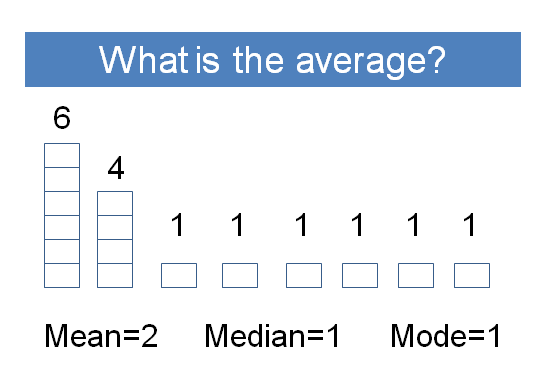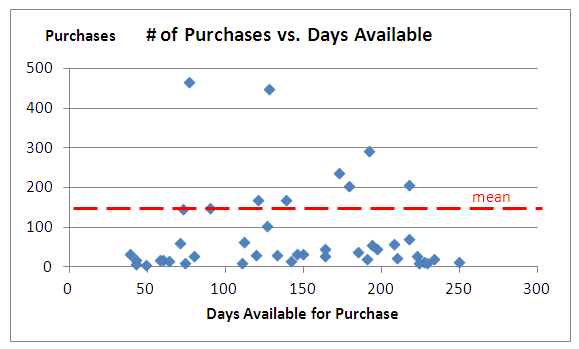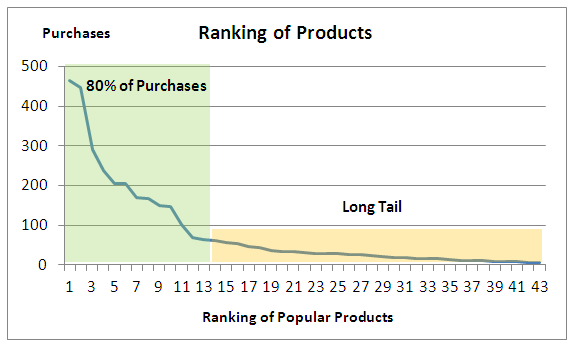
There is more than 1 average
It is probably more precise to use the words: mean, median, or mode. Want to brush up? check out Khan Academy here.
Averages can be misleading
When you say “average” it sounds more accurate than it really is. It is just a data point that describes the central tendency. Not going to talk about range, distributions, and standard deviation (trust me, I am not the right person), but its worth knowing. Go to a Stats class, or watch Khan Academy on range dispersion here.
Don’t be surprised if you client asks you “What is the standard deviation?”. It has happened to me and it will happen to you too.
Sometimes averages have no meaning
In the graph below, you can see that the “average” # of purchases was about 150, even though there were only 2-3 products that sold that exact number. The max was about 450, and the min was 5. The mean (shown with the dotted red line) almost looks arbitrary. Not a lot of insight here.

Don’t be surprised to see a long-tail
We live in a very non-linear world where a few inputs (e.g., albums, football teams, drink manufacturers etc) create the majority of the outputs (e.g., sales, profits etc). Read up on the Pareto Principle or buy The 80/20 Principle (affiliate link).
In the graph below, the best-selling 13 products (in the green area) make up 80% of the sales. It is then followed by a long tail (next 30 products) that make up the rest. This is very common in the corporate world: a few salespeople make the sales, a few customers drive profits. As a result, using averages can be silly or wrong.
The Long Tail
Chris Andersen (of Wired and TED fame) wrote The Long Tail (affiliate link) in 2004 to discuss how the internet was leveling the playing field so that the niche, less popular items could be sold in the same aggregate volumes as blockbusters. See his blog here.
Don’t average averages
Seems obvious, but people do it all the time. The answers will be inaccurate because it creates a straight average instead of a weighted average.
Averages are dull instruments
Think of it like a machete to clear out some underbrush. It can cut through some of the clutter and help you to see a little bit further, but that is about it. The client is probably hiring you for some refined work, and my guess is that it will take more than averages to get the job done.
